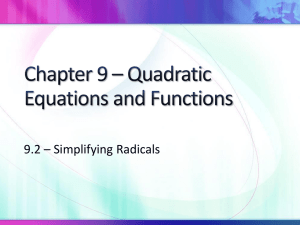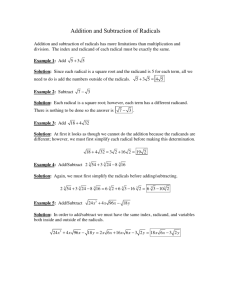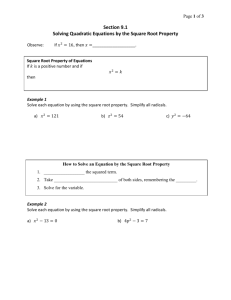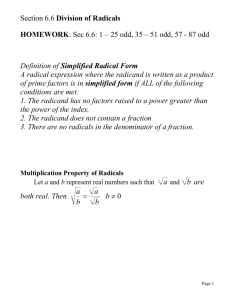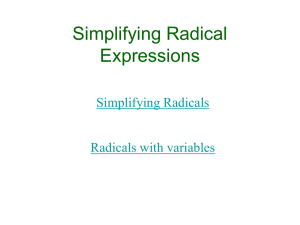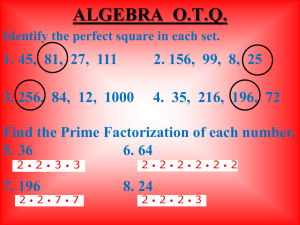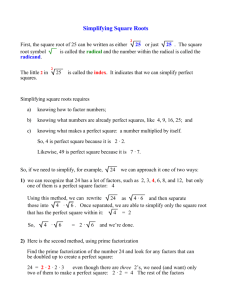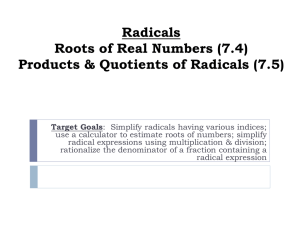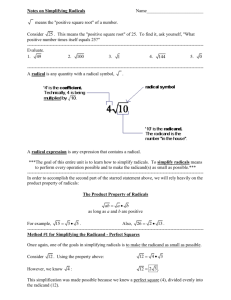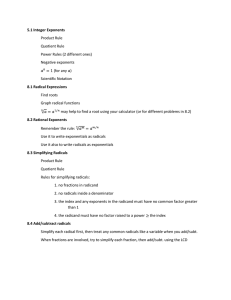Combining Unlike Radicals (Sec. 10.2)
advertisement
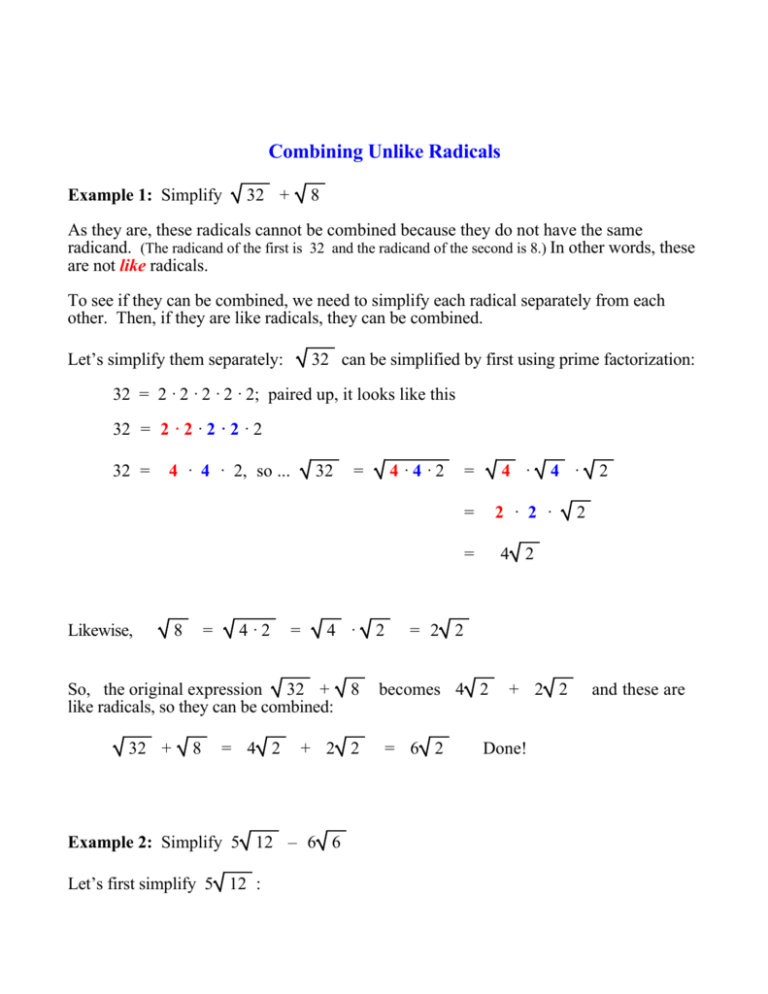
Combining Unlike Radicals Example 1: Simplify 32 + 8 As they are, these radicals cannot be combined because they do not have the same radicand. (The radicand of the first is 32 and the radicand of the second is 8.) In other words, these are not like radicals. To see if they can be combined, we need to simplify each radical separately from each other. Then, if they are like radicals, they can be combined. Let’s simplify them separately: 32 can be simplified by first using prime factorization: 32 = 2 · 2 · 2 · 2 · 2; paired up, it looks like this 32 = 2 · 2 · 2 · 2 · 2 32 = 4 · 4 · 2, so ... 32 = 4·4·2 = 4 · = 2 · 2 · = Likewise, 8 = 4·2 = 4 · So, the original expression 32 + 8 like radicals, so they can be combined: 32 + 8 = 4 2 + 2 2 Example 2: Simplify 5 12 – 6 6 Let’s first simplify 5 12 : 2 4 · 2 2 4 2 = 2 2 becomes 4 2 = 6 2 + 2 2 Done! and these are 5 12 = 4·3 = 5·2· 3 = 10 3 6 6 cannot be simplified since 6 has no perfect square factors. So, the original expression 5 12 – 6 6 becomes 10 3 – 6 6 are not like radicals, so they can’t be combined. All we could say is that 5 12 – 6 6 = 10 3 – 6 6 Done! but these
